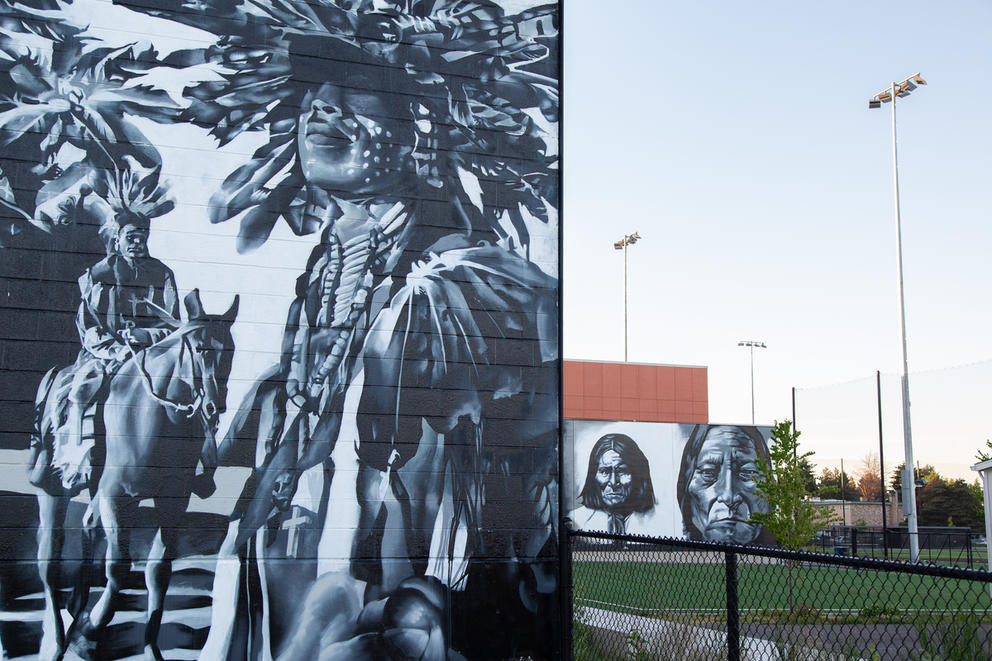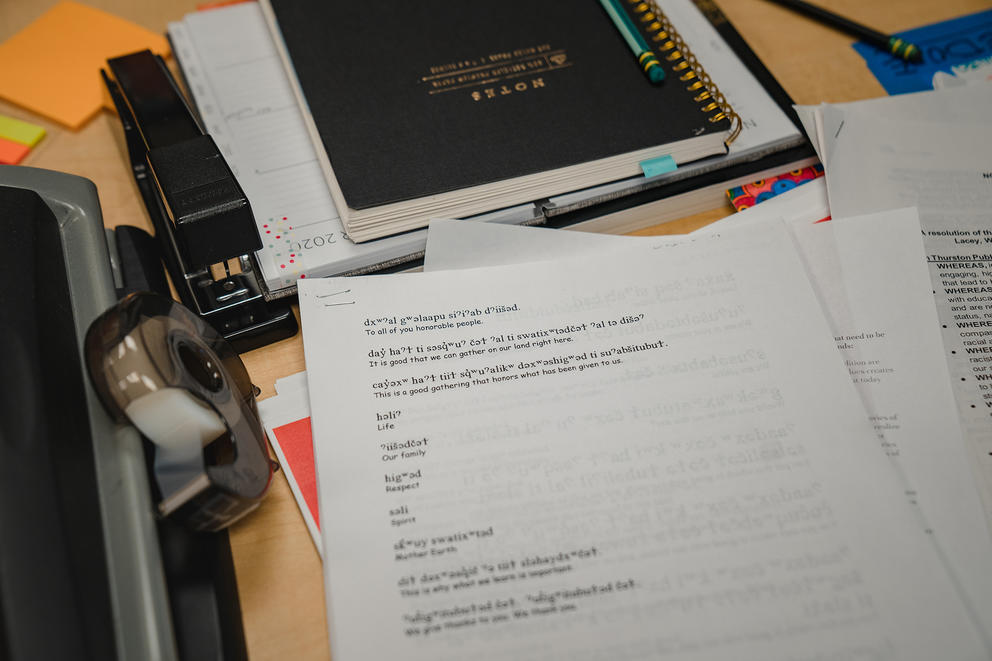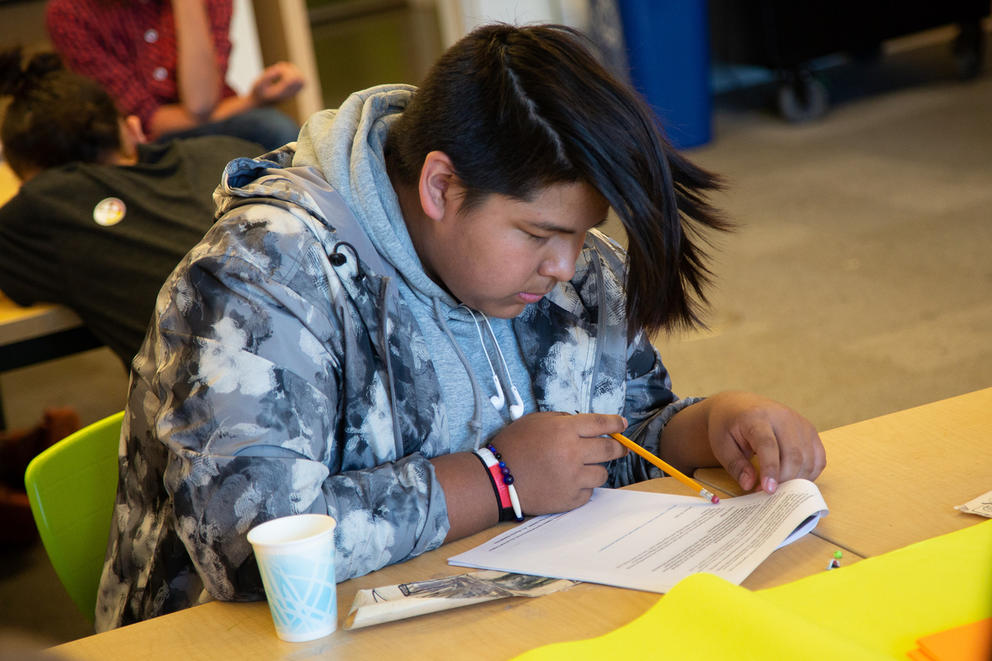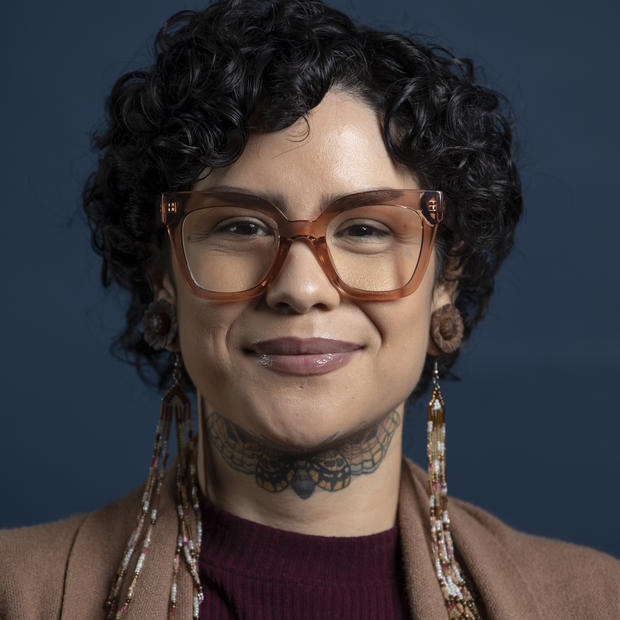Raised by educators and advocates for Native families and communities, James was excited to continue that tradition when she became the Tulalip Tribes’ curriculum and engagement manager in 2016. In her new role, she was expected to facilitate the creation of a curriculum about the Tulalip Tribes and teach it to teachers in the 12 school districts on or near the Tulalip reservation.
Nearly seven years later, however, it is unlikely any of the Since Time Immemorial curriculum has been fully implemented across all grade levels in any district in Washington, according to representatives from the state superintendent’s office, the Office of Native Education and Indigenous leaders in education.
The financial burden has largely been placed on the tribes and individual school districts. James said she isn’t surprised.
“I didn't really expect a lot of resources because it’s education and because it's around tribal work,” said James. “We're used to rubbing two nickels together.”
Tribes have mostly paid for the creation of the curriculum and teacher training over the years and offered online resources for lesson planning. Many districts have contributed by paying for substitute teachers and training days so that teachers can participate, but that is still not enough. “I don't think anyone saw this is happening without a funding resource to sustain the work, and we're still here today and this implementation is growing,” said Dr. Laura Lynn, program supervisor at the state’s Office of Native Education.
But school districts across the state are still benefiting from this new work. Each tribe’s teaching plan creates a pathway for building relationships with tribal communities that often wasn’t there before. The superintendent’s office is required to help each district begin a partnership with its nearest tribe to get consultation and training on developing accurate lesson plans about the tribe's culture and history.
“Those relationships with tribal nations are essential to grow all of our instructional work and to grow opportunities for students to learn directly with contemporary tribal people who are their neighbors,” said Lynn.
A resource on the Lushootseed language used by the Nisqually people is on the desk of history teacher Alison McCartan, photographed on Nov. 12, 2020, at River Ridge High School in Lacey. The school is one of the first in Washington state to incorporate Native history into its curriculum. (Jovelle Tamayo for Crosscut)
Not a monolith
Federally recognized tribes within or near each school district create their own unique lesson plans so that they have agency over how and what is taught about their heritage. This is meant to ensure that past misrepresentation of Native peoples as a monolith isn’t perpetuated any longer.
At minimum, schools can use the free Since Time Immemorial curriculum available on the state superintendent’s website. Once the tribe-specific curriculum is created, in collaboration with tribal partners, school districts and educators can decide whether they would like to teach from the tribes’ lesson plans alone or also incorporate the state-developed Since Time Immemorial coursework. Teachers and their districts are given the freedom to decide what is best suited for their classrooms in collaboration with tribal partners.
“It's about taking and learning from each other, knowing that there's definitely differences amongst each tribe and their customs, beliefs and values,” said Jon Claymore, executive director of the state’s Office of Native Education and a member of the Cheyenne River Sioux Tribe.
Throughout this process, educators provide feedback about the lessons, training and implementation. “We really want to serve our educators in a good way so that they can provide this amazing opportunity for their students,” Lynn said.
According to James, the heavier lift is training educators to teach the tribal curriculum, which requires “a completely different mindset.” Because the tribal curriculum offers a local Indigenous way of teaching ancestral knowledge, it requires ongoing training and relationship-building, she said.
The superintendent's awarded $15,000 grants to nine tribes who applied in 2021 and $30,000 grants to each tribal-state compact school who applied this year to support to support developing curriculums and training school districts to teach them, according to Claymore. Claymore acknowledged that this wasn’t nearly enough but was happy that there was some funding.
James estimated that the Tulalip Tribes have spent at least $400,000 on curriculum creation and training since she started in 2016. She is currently the only person in her department, but with proper funding, she believes having a counterpart in each school would be beneficial. “I need someone who can be on site and on call to be that expert around keeping tribal interest in mind and thinking about things in an Indigenous way,” she said.
Place-based learning
James would also like to see something like the University of Washington’s Native Education Certificate Program implemented but on a district level, so that educators are taught by leading Native education researchers. This program is more in line with the Tulalip way of thinking about relationship building. For the Tulalip, it’s important that relationships are strengthened with the school districts and also in the community for the wel-lbeing and educational success of Tulalip and Native students and families.
Successful engagement with Native students and their families is a major part of the Indigenous way of learning and teaching, according to James and Patricia Whitefoot of the Yakama Nation, a respected elder who is a member of the state’s Native American Education Advisory Committee, second vice president of the National Indian Education Association’s board of directors and education co-chair of the Affiliated Tribes of Northwest Indians.
Whitefoot works in education because of what she calls her bad education experience and because she hopes to impact change. She attested to the minefield of misinformation and violence she personally experienced in public education. Whitefoot recalls being made fun of because of her moccasins, long hair and brown skin. “That aggression was always a constant,” she said.
Each tribe’s curriculum is also rooted in place-based learning, meaning it is specific to a place and the relationship and experiences of the people to that place. The curriculum also creates opportunities to reconnect with nature, according to Lynn. “We have a responsibility to each other and to our relatives of nature, to do our work in a good way together,” she said. These nuanced ways of viewing education require ongoing training in collaboration with tribal partners for educators seeking guidance. “I think probably the greatest challenge is just to be able to continue those conversations,” Lynn said.
According to Lynn, a lack of funding means students are missing opportunities to take field trips to learn about salmon habitats and life cycles, the ecosystems of the ocean, and learn about the villages and gathering places of Indigenous people by Indigenous people and in tribal cultural history museums on tribal homelands and reservations.
A bus field trip could cost up to $2,000, according to Lynn. “As we invite honored and knowledgeable tribal elders and teachers into our schools, we want to be respectful and to fairly compensate them for their travel, time and expertise, as we would any esteemed presenter and ensure that any material costs associated with teachings with our students are covered,” Lynn said.
Storytelling teachings, weaving, drum-making, carving, beading, learning about maintaining Native plant gardens through the seasons, preparing foods and the teaching that come with sharing the foods should all be part of a curriculum based on the connection with ancestral lands. But these experiences are being missed because there isn’t enough money to provide field trips for students.
Eric Nichols, 15, reads through a handout during an after-school Urban Native Education Alliance workshop on tribal land acknowledgment at Licton Springs K-8 school on June 11, 2019. Seattle Public Schools terminated its partnership with the alliance, which provides Native-focused programming like this to students, in 2019. (Jen Dev/Crosscut)
Lack of resources
And money isn’t the only challenge. In the 12 districts required to consult with the Tulalip Tribes, James says she still had to remind district officials that the curriculum is required by state law and that she was there to help. “It is also an opportunity for [districts] to understand and learn from the technologies and wisdom and history of people who have been here forever,” James said.
Despite the barriers, Indigenous leaders and dedicated educators have still made progress. Before students were required to learn about tribal history and culture, only 24% of Washington school districts had at least one teacher who had participated in a training with the state’s Office of Native Education. Since 2020, participation has increased to 65%, with over 7,000 educators from 190 of Washington’s 295 districts participating in virtual Since Time Immemorial training.
Claymore of the Office of Native Education was optimistic. “It's coming to life and it's just nothing but a good feeling. It's about keeping that momentum moving forward now, as the voice is becoming clearer from our Native folks,” he said.
In June, all school board members, superintendents and teachers will be required to complete tribal consultation and training materials by Sept. 1, 2024, as mandated by Senate Bill 5252 from the state’s Senate Committee on Early Learning & K-12 Education. However, committee members did not specify a deadline for application of the curriculum.
The bill provides an immediate $200,000 for consultation and training and over $500,000 for the following two years, according to state Sen. Lisa Wellman, D-Mercer Island, who sponsored the bill and intends to take the training herself. In addition to being chair of the Senate Education Committee, Wellman has worked most of her career in education.
According to Lynn, additional policy is needed to give a deadline for districts to implement and for the state superintendent’s office to monitor implementation of the curriculum across the state. Like Lynn and Claymore, Wellman also believes the state should be tracking the progress at each stage of consultation, training and implementation. “I'm not happy with the level of accountability,” Wellman said.
James said the Lake Stevens, Marysville and Mukilteo school districts — places with talented Native and non-Native educators already familiar with the Tulalip Tribes because of the districts' large Native student population — took the time and made the effort to learn. She called them an example of how to work with the Tulalip Tribes and implement the curriculum. But even in these districts the curriculum hasn’t been fully implemented. James attributed this largely to the lack of resources.
During the pandemic, creating and implementing this new curriculum became more difficult because of district budget cuts in the Marysville School District. Curriculum development has been largely put on hold because the district can no longer afford to pay teachers to take time off to work on curriculum input and development.
The walls of history teacher Alison McCartan’s classroom at River Ridge High School in Lacey, photographed on Nov. 12, 2020, features a timeline activity students completed. After the first two units of the class, McCarten asked students to reflect on the most significant events in Native history and create event cards to add to a physical timeline. River Ridge High School is one of the first in Washington state to incorporate Native history into its curriculum. (Jovelle Tamayo for Crosscut)
A matter of life and death
Not all districts are as eager as Marysville, though. Claymore of the state’s Office of Native Education said he has encountered hesitation, but once teachers have gone through the training, they come around and see the good that can come from the curriculum.
According to the National Indian Council on Aging, integrating Indigenous history and knowledge into educational curriculum can be a matter of life or death for Native youth. Data has shown that the history of assimilation practices and intentional ways of disconnecting Native children from their cultures in educational settings alienates them and contributes to higher rates of suicide among Indigenous youth.
There is no data on whether the integration of Since Time Immemorial curriculum has positively affected students' education outcomes, but Lynn believes that there are indicators that we're moving in the right direction — and that the Since Time Immemorial curriculum is a part of it. “I think having space for our story of your people to be shared in a truthful, honest, fair and accurate way is certainly a huge part of that,” Lynn said. “We share not only the trauma but more importantly about resilience, and that's when we see ourselves fairly represented within our curriculum; it allows us to be fully present.”
“These [education] systems are not safe for Native people, for women, for disabled people to thrive in, even as employees” James said. “This is one part of what we're doing as a community to make things better and healthier for our kids.”






